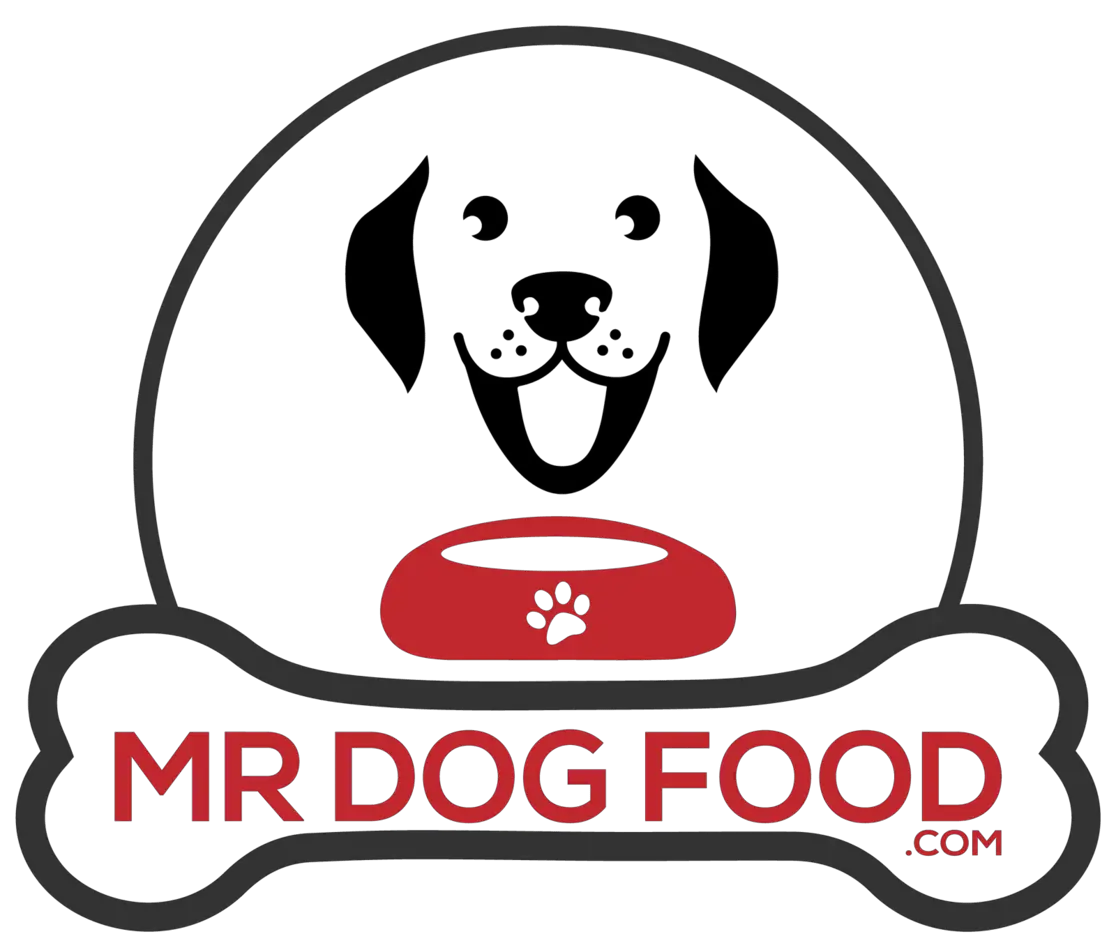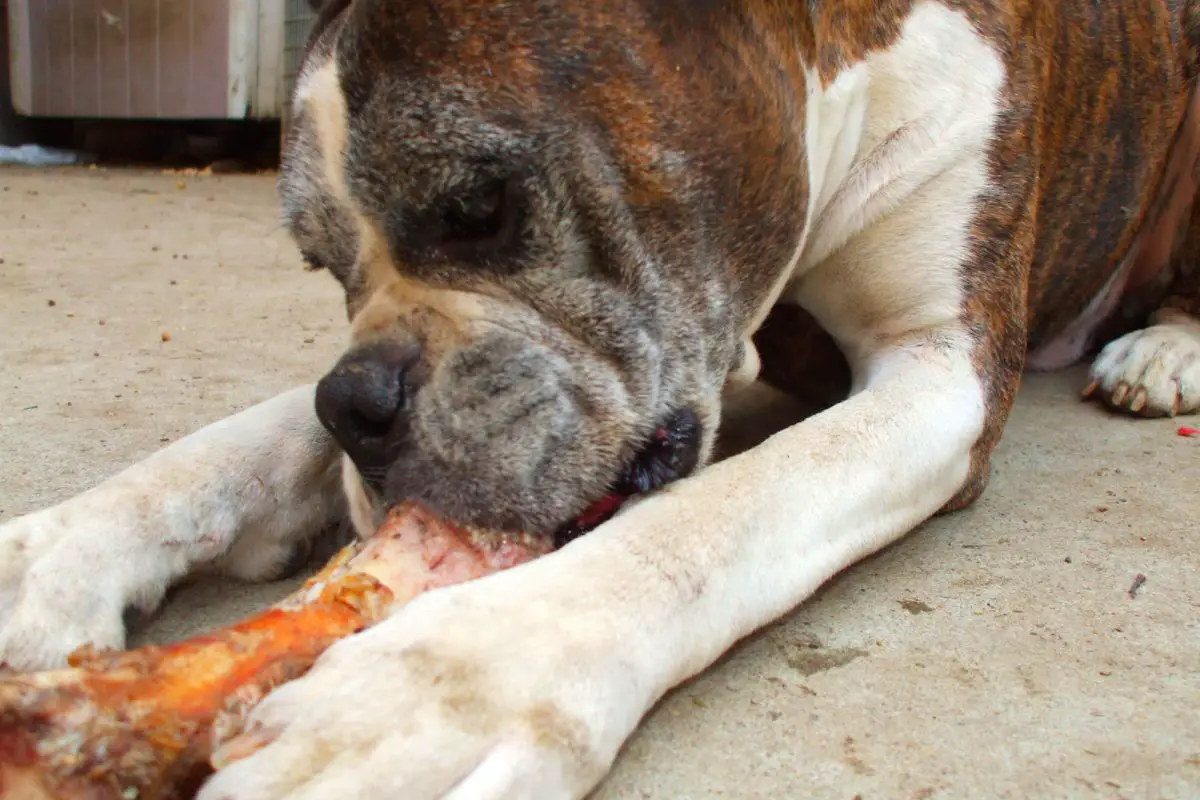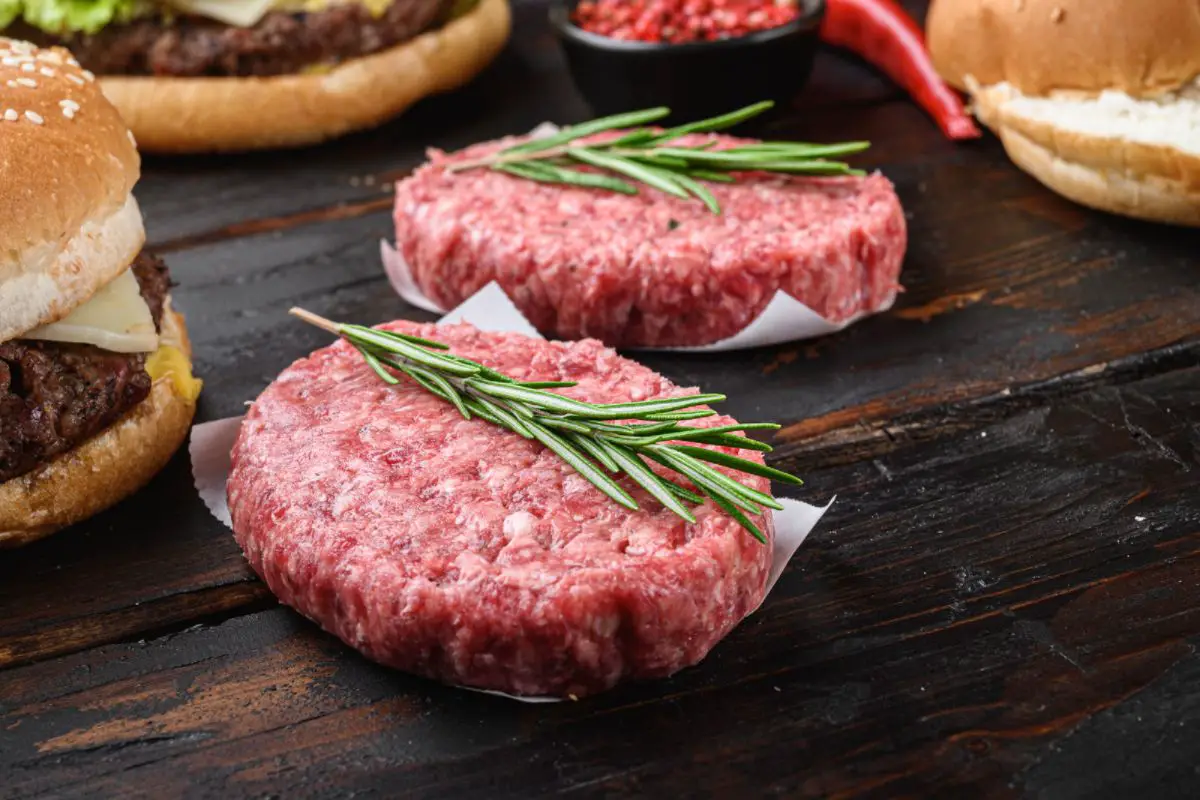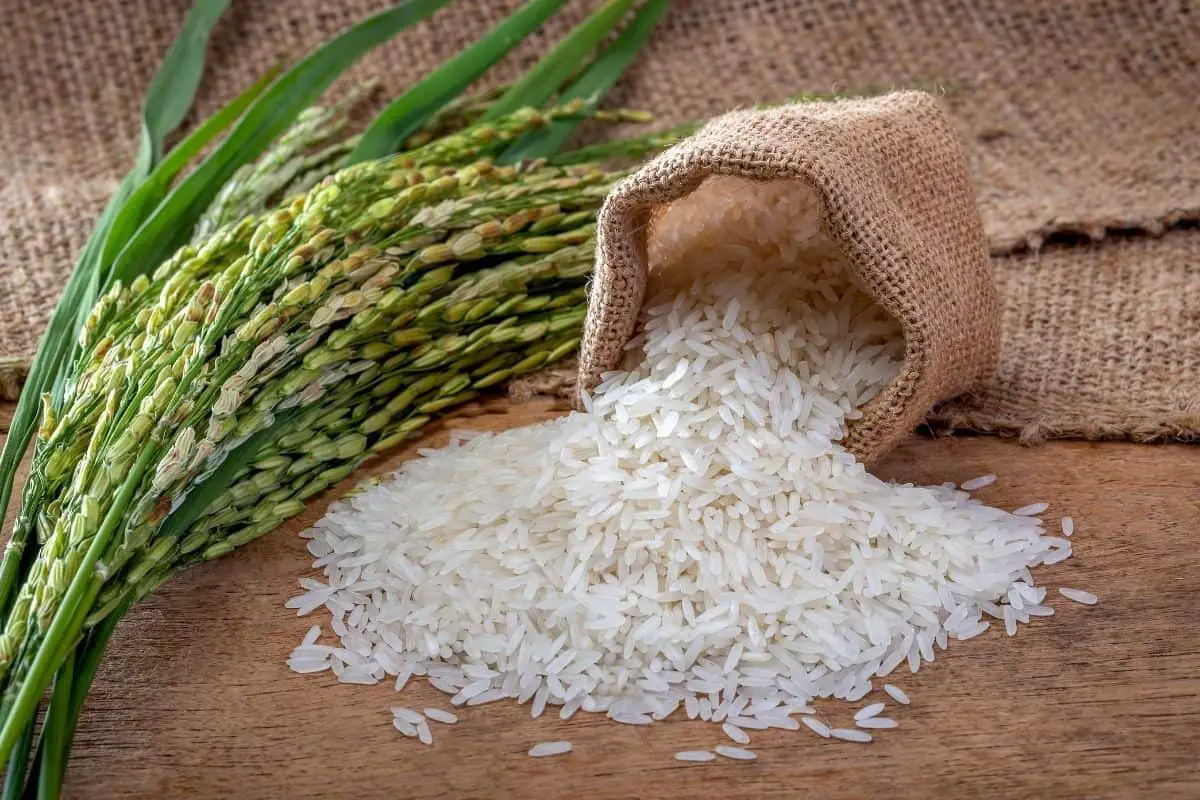This post contains affiliate links.
Chewing is one of the most basic, instinctual dog behaviors. Due to this, they commonly relieve this urge by chewing bones (or maybe, if you aren’t looking, your favorite pair of sneakers). However, there are many different types of bones available for dogs to gnaw on, which leaves you wondering what is safe for them and what isn’t.
Dogs can eat deer bones as long as they are raw and longer than their muzzle. Also, there are several factors to be cautious of when letting your dog chew on any type of bone. The size of your dog, the kind of bone, and possible adverse health effects are significant factors to consider.
The following article will outline and explain the benefits and possible drawbacks of letting your dog eat or chew on a deer bone. Other vital pieces of information such as why deer bones can provide your dog with benefits, why chewing bones are healthy for your dog, and some possible alternatives to deer bones will also be discussed.
Table of Contents
The Benefits of Eating Deer Bones for Dogs
As discussed, dogs can eat or chew on deer bones. However, it’s important to note that they are not recommended to be actually ingested as food. If accidentally eaten, dogs can usually digest smaller bones or bone fragments perfectly fine, but consuming any bone brings the risk of improper digestion and health problems.
When prepared safely, dogs can reap several health benefits from chewing on a deer bone. Here are some of the main advantages that dogs get from deer bones.
Improved Dental Health
For one, all types of bones can help dogs maintain proper dental care. The act of chewing on a bone helps to strengthen their teeth as well as their jaw joints.
In addition, chewing causes them to produce more saliva, which is more basic on the pH scale. Acids aid the tooth decay process in food and bacteria inside the mouth. The alkaline properties in their spit help prevent the formation of cavities in their teeth.
Enhanced Nutrition
Another positive outcome for your pet brought by munching on bones is that they are packed with vitamins, minerals, and other components that provide healthy nourishment for your canine. The following sections outline the most crucial portions.
Bone Marrow
All bones, including deer bones, contain bone marrow. Bone marrow is a type of tissue found toward the center of the bone, known for its squishy, stretchy, and porous consistency. It is extremely valuable in that it contains stem cells.
Stem cells are essentially blank template cells in that they may transform into many different types of cells in the body. For dogs, stem cells ingested in bone marrow can become red or white blood cells.
Red blood cells help deliver oxygen throughout the body, and white blood cells help fight infections. Additionally, stem cells may also turn into platelets that help blood clot when you are injured or bleeding.
However, it is essential to note that bone marrow contains a high percentage of fat, which when consumed in large amounts can lead to medical problems like obesity or pancreatitis.
On the bright side, deer bones contain relatively low-fat levels compared to other types of animal bones available for dogs, so you don’t have to worry about overconsumption of fat.
Vitamins and Minerals
Dogs can obtain vitamins and minerals by crunching on bones. Deer bones specifically contain high amounts of calcium, phosphorus, and iron. Calcium and phosphorus work together to help strengthen bones and teeth, while iron helps pump oxygen to cells so that they can make energy.
Moreover, deer bones are a source of protein and collagen. Adding these two nutrients to your canine’s diet will help enhance the building blocks of important tissues in the body. Protein and collagen both help produce and strengthen skin, hair, joints, and cartilage.
Digestive Aide
In addition to the direct benefits of consuming the different elements in deer bones, chewing on bones can help with your dog’s digestion. The consistency of bones is rougher than traditional dog food, which can help make the stomach muscles stronger.
The vitamins and minerals that deer bones are rich in also help the stomach absorb and extract even more nutrients from the food it ingests.
Stress Release
Another surprising health benefit that dogs can gain from chewing a deer bone is that it is a way for them to release tension and stress.
Sometimes, dogs will develop a poor habit of licking or scratching themselves as a way to relieve anxiety. Chewing on a bone can help remove some of this pent-up energy.
In addition to helping them cope with stress, allowing your dog to gnaw on a bone is another way to shift their focus from harmful chewing habits. If your canine seems to have an affinity for chewing on your favorite household items, giving them a bone is a great substitute that will help reduce this habit.
Possible Risks of Letting Your Dog Eat Deer Bones
While dogs have many advantages in munching on deer bones, there are also some risks. As with any new food or substance you plan to introduce to your pup’s diet, it is always best to consult with your veterinarian to make sure everything is safe.
However, here are the most common concerns that you should be aware of:
The Smaller Size of Deer Bone Can Pose Risks of Choking
Compared to other animal bones dogs typically eat, including cow, bison, or lamb bones, deer bones are smaller in size. This means that they pose more of a choking hazard compared to the other kinds of animal bone available. If accidentally swallowed, it could block your dog’s airway, which can potentially be fatal.
That being said, the general rule of thumb for giving your dog a bone is to make sure anything you give them to chew on is longer than the length of their muzzle. Ensuring that the bone is longer than their muzzle also makes sure that it would be almost impossible for them to swallow it whole.
Also, smaller breeds or puppies should not be fed deer bones, as their small size makes potential choking even more dangerous if they were to swallow a large piece of the bone accidentally.
In contrast, be careful when giving larger breeds smaller bones, as they could easily swallow them.
It is also recommended that if your dog tends to wolf things quickly, you should avoid giving them bones. Eating at a fast pace means it is likely that they cannot break down the bone properly, and they might try to swallow it whole.
You should let your dog chew on bones for only between 10 and 20 minutes at a time to keep them safe.
Cooked vs. Raw
Dogs should not be given cooked bones of any kind. Bones that are cooked lose a large percentage of the moisture they once held, making them become more brittle and dry. A brittle bone is more likely to splinter or break, which can be very harmful to your dog if they accidentally swallow the sharp pieces.
Sometimes, small portions of bones accidentally ingested can pass through your canine’s digestive tract with no issue, but larger pieces might get trapped in their esophagus or cause intestinal blockage.
This can lead to either difficulty breathing or a cut-off of oxygen, while intestinal blockages have the potential to rupture and cause harmful infections.
Bones that break and fragment also put your dog at risk for tooth damage, breakage, or cuts inside their mouth that can fill with bacteria and become infected.
On the other hand, raw bones are much safer for your dog. They retain their moisture so that they may be chewed on with low risk.
All of the nutrients your pup gets from chewing only come from raw bones, as cooked bones lose most of their nourishment due to heat. If you’re going to feed your dog deer bones, be sure to leave them raw and uncooked.
Another thing to keep in mind is that there is some risk of bacteria contamination with raw bones, as there is with any type of raw meat. But you don’t have to worry. If you buy raw bones that have been appropriately handled and if you refrigerate the bone while not in use, your dog should be able to chew on it with no problem at all.
Possible Alternatives to Deer Bones
If you are concerned about giving your dog a deer bone to chew on, there are several possible alternatives.
Here are the most common other types of bones that dogs can safely consume:
- Cow, lamb, or beef bones: the raw bones from these three different animals are both large enough and soft enough to be chewed on.
- Artificial bones: if all the potential hazards of chewing on a bone have you worried for your dog, there is nothing wrong with buying a synthetic bone. They will not splinter and pose less of a choking hazard.
- Ground up bones: another possible way to work bones into your canine’s diet is to grind them up and mix them with their food. This way, there is no potential for blockage or choking. However, in doing so, all the benefits that come from the actual act of chewing on the bone are lost.
Conclusion
Deer bones are safe for dogs to eat, but only if they are prepared correctly and given to your dog under safe conditions. Make sure bones are longer than their muzzle, raw, and limit chewing time to under 20 minutes.
Remember to consult with your dog’s veterinarian before adding anything (including bones) to your dog’s diet or daily routine.
Mrdogfood.com is a participant in the Amazon Services LLC Associates Program, an affiliate advertising program designed to provide a means for sites to earn advertising fees by advertising and linking to Amazon.com. We also participate in other affiliate programs which compensate us for referring traffic.




